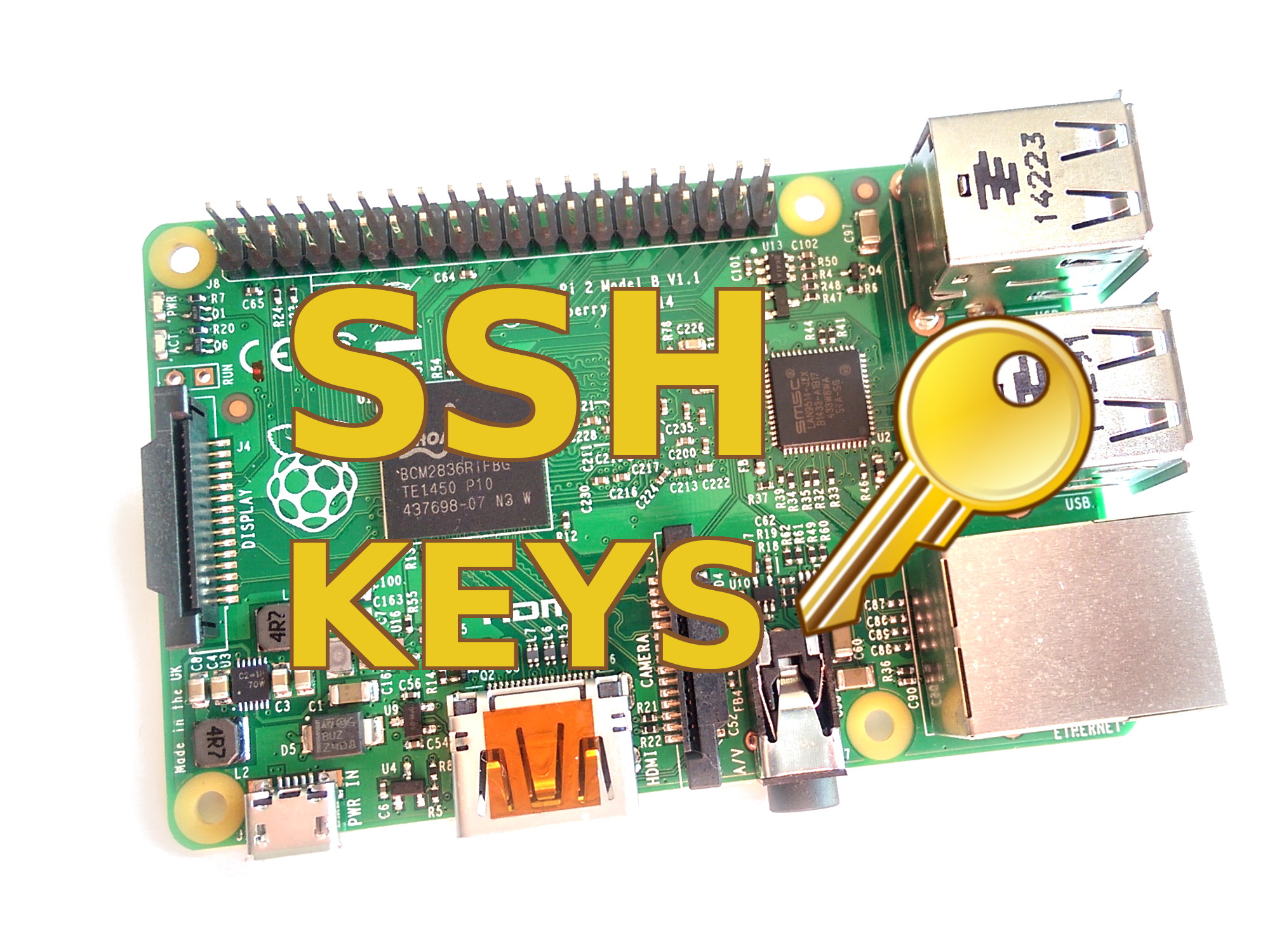RemoteIoT VPC SSH Raspberry Pi Free represents a cutting-edge combination of technologies designed to empower users with secure, efficient remote access to their Raspberry Pi devices. Whether you're a developer, hobbyist, or IT professional, this solution enables you to harness the power of cloud-based virtual private networks (VPCs) while maintaining the lightweight versatility of Raspberry Pi. In today's world, where remote work and IoT device management are increasingly essential, understanding how to implement this setup is crucial for enhancing both productivity and security.
Secure remote access is more important than ever, especially when managing sensitive data or critical systems. By utilizing RemoteIoT's VPC SSH solution, users can ensure their Raspberry Pi devices remain accessible globally while staying protected from unauthorized access. This guide will walk you through the entire process, from setting up your Raspberry Pi to configuring the VPC and establishing an SSH connection. Additionally, we'll explore cost-effective strategies by leveraging free resources.
This comprehensive article delves into the step-by-step process of setting up RemoteIoT VPC SSH with Raspberry Pi, highlighting its advantages and offering practical tips for optimizing your remote access experience. Whether you're new to Raspberry Pi or an experienced user, this guide will equip you with the knowledge and tools necessary to fully leverage this innovative solution. Let’s explore how you can unlock the full potential of your Raspberry Pi with RemoteIoT VPC SSH.
Read also:Exploring The Rise Of Olivia Pacino A Rising Star In Hollywood
Table of Contents
- Introduction to RemoteIoT VPC SSH
- What is Raspberry Pi and Its Role in Remote Access?
- Benefits of Using RemoteIoT VPC SSH with Raspberry Pi
- Step-by-Step Guide to Setting Up RemoteIoT VPC SSH
- How to Connect to Raspberry Pi Using SSH
- Common Challenges and Solutions
- Best Practices for Secure Remote Access
- Cost-Effective Solutions with Free Resources
- Real-World Applications of RemoteIoT VPC SSH
- Conclusion and Next Steps
Introduction to RemoteIoT VPC SSH
RemoteIoT VPC SSH is a cloud-based solution designed to facilitate secure and reliable remote access to IoT devices, including Raspberry Pi. A Virtual Private Cloud (VPC) creates an isolated network environment within the cloud, safeguarding your devices from external threats. By integrating SSH (Secure Shell), users can establish encrypted connections to their devices, enabling them to execute commands, transfer files, and manage configurations remotely.
The architecture of RemoteIoT VPC SSH prioritizes security and scalability. The VPC ensures all traffic between your Raspberry Pi and the cloud remains encrypted and isolated from public networks. Meanwhile, SSH provides a secure communication protocol that authenticates users and encrypts data during transmission. Together, these technologies form a robust framework for managing IoT devices without compromising safety or performance.
For users interested in RemoteIoT VPC SSH Raspberry Pi Free, the platform offers a range of features that make it accessible and cost-effective. From automated device provisioning to real-time monitoring, RemoteIoT simplifies the complexities of remote device management. This makes it an excellent choice for individuals and organizations seeking to enhance their IoT infrastructure without significant expenses.
What is Raspberry Pi and Its Role in Remote Access?
Raspberry Pi is a compact, single-board computer renowned for its versatility and affordability. Originally developed as an educational tool, it has evolved into a powerful platform for various applications, including IoT projects, home automation, and remote server management. Its small size, low power consumption, and compatibility with multiple operating systems make it ideal for remote access solutions.
When paired with RemoteIoT VPC SSH, Raspberry Pi becomes a cornerstone in enabling secure and efficient remote access. Its ability to run lightweight operating systems like Raspbian and support SSH protocols allows users to connect to their devices globally. This is particularly advantageous for managing IoT devices in remote locations or automating tasks without physical intervention.
Raspberry Pi's role in remote access is further enhanced by its GPIO (General Purpose Input/Output) pins, enabling it to interface with sensors, actuators, and other peripherals. This makes it an ideal platform for building custom IoT solutions that require real-time data collection and control. By leveraging RemoteIoT VPC SSH, users can unlock the full potential of their Raspberry Pi while ensuring device security and accessibility.
Read also:Madison Cain Lukas Nelson A Rising Star In Country Music
Benefits of Using RemoteIoT VPC SSH with Raspberry Pi
Integrating RemoteIoT VPC SSH with Raspberry Pi offers numerous advantages that make it a standout choice for remote device management. One of the primary benefits is enhanced security. By combining the VPC's isolated network environment with SSH's encryption protocols, users can protect their Raspberry Pi devices from unauthorized access and cyber threats. This is especially critical for applications involving sensitive data or critical infrastructure.
Another significant advantage is the flexibility and scalability of the solution. RemoteIoT VPC SSH allows users to manage multiple Raspberry Pi devices from a centralized interface, making it easy to expand their IoT infrastructure as needed. The platform also supports automated provisioning and real-time monitoring, streamlining workflows and reducing operational overhead.
Cost-effectiveness is another key benefit of using RemoteIoT VPC SSH Raspberry Pi Free. By utilizing free resources and open-source tools, users can implement this solution without incurring significant expenses. This makes it an attractive option for hobbyists, startups, and small businesses aiming to maximize ROI while maintaining high standards of security and performance.
Step-by-Step Guide to Setting Up RemoteIoT VPC SSH
Setting up RemoteIoT VPC SSH with Raspberry Pi involves several critical steps to ensure a secure and functional remote access solution. Below is a detailed guide to help you through the process.
Preparing Your Raspberry Pi
Before integrating your Raspberry Pi with RemoteIoT VPC SSH, prepare the device by installing necessary software and configuring its settings. Begin by downloading and installing the latest version of Raspberry Pi OS from the official website. After installation, update the system using the following commands:
sudo apt updatesudo apt upgrade
Next, enable SSH on your Raspberry Pi by running sudo raspi-config and navigating to the "Interfacing Options" menu. Select "SSH" and choose "Yes" to enable it. This will allow you to connect to your device remotely using an SSH client.
Configuring the VPC
Once your Raspberry Pi is ready, configure the VPC on the RemoteIoT platform. Log in to your RemoteIoT account and create a new VPC instance. During the setup process, specify network settings, such as IP ranges and subnets, ensuring they align with your Raspberry Pi's configuration to prevent connectivity issues.
After creating the VPC, generate an SSH key pair and download the private key to your local machine. This key will authenticate your connection to the Raspberry Pi. Finally, associate your Raspberry Pi with the VPC by following the platform's device registration instructions. Once completed, your Raspberry Pi will be securely integrated into the VPC environment.
How to Connect to Raspberry Pi Using SSH
Connecting to your Raspberry Pi via SSH is a simple process requiring an SSH client and the private key generated during VPC configuration. On Windows, tools like PuTTY or Windows Terminal can be used, while macOS and Linux users can utilize the built-in Terminal application.
To establish a connection, open your SSH client and enter the following command:
ssh -i /path/to/private/key pi@your-raspberry-pi-ip
Replace "/path/to/private/key" with the actual path to your private key file and "your-raspberry-pi-ip" with the IP address of your Raspberry Pi. If configured correctly, you'll be prompted to enter the passphrase for your private key. Once authenticated, you'll gain access to your Raspberry Pi's command-line interface.
For added convenience, create an SSH configuration file to store your connection details. Simply create a file named "config" in the ".ssh" directory of your home folder and add the following lines:
Host raspberrypiHostName your-raspberry-pi-ipUser piIdentityFile /path/to/private/key
With this setup, you can connect to your Raspberry Pi by typing ssh raspberrypi in your terminal.
Common Challenges and Solutions
While setting up RemoteIoT VPC SSH with Raspberry Pi is generally straightforward, users may encounter a few common challenges. One frequent issue is connectivity problems between the Raspberry Pi and the VPC, often caused by misconfigured network settings or firewall rules blocking SSH traffic. To resolve this, verify your VPC's IP ranges and ensure necessary ports (typically port 22 for SSH) are open.
Another challenge is key authentication errors, which may arise if the private key is improperly configured or file permissions are incorrect. To address this, confirm the private key file has the correct permissions by running chmod 600 /path/to/private/key. Additionally, ensure the public key has been correctly added to the Raspberry Pi's authorized_keys file.
Some users may experience performance issues when managing multiple devices within the VPC. To optimize performance, use RemoteIoT's automated provisioning tools and monitoring features to streamline device management. Regularly updating your Raspberry Pi's software and firmware can also enhance stability and security.
Best Practices for Secure Remote Access
Ensuring secure remote access is vital when managing Raspberry Pi devices through RemoteIoT VPC SSH. A key practice is using strong, unique passwords and SSH keys for authentication. Avoid default credentials and regularly rotate your keys to minimize unauthorized access risks.
Implementing two-factor authentication (2FA) adds another layer of security. Many SSH clients support 2FA through tools like Google Authenticator or Duo Security. Requiring a second form of verification significantly reduces the likelihood of successful brute-force attacks.
Regularly monitor your VPC and Raspberry Pi devices for suspicious activity. RemoteIoT offers real-time monitoring and alerting features to help detect and respond to potential threats. Additionally, keeping your software and firmware up to date protects against known vulnerabilities.
Cost-Effective Solutions with Free Resources
A standout feature of RemoteIoT VPC SSH Raspberry Pi Free is its ability to provide a robust remote access solution without significant costs. Leveraging free resources and open-source tools enables users to implement this setup while staying within budget. For instance, Raspberry Pi OS and SSH client software are both available at no cost, making them ideal for cost-conscious users.
RemoteIoT offers a free tier that includes essential features such as device registration, basic monitoring, and limited VPC configurations. While the free tier may have some restrictions, it's sufficient for small-scale projects or personal use. For users requiring more advanced features, the platform provides affordable paid plans that scale with your needs.
Another cost-saving strategy is utilizing community resources, such as forums and documentation, to troubleshoot issues and enhance your setup. Engaging with the Raspberry Pi and RemoteIoT communities can provide valuable insights and support, further maximizing the value of this solution.

